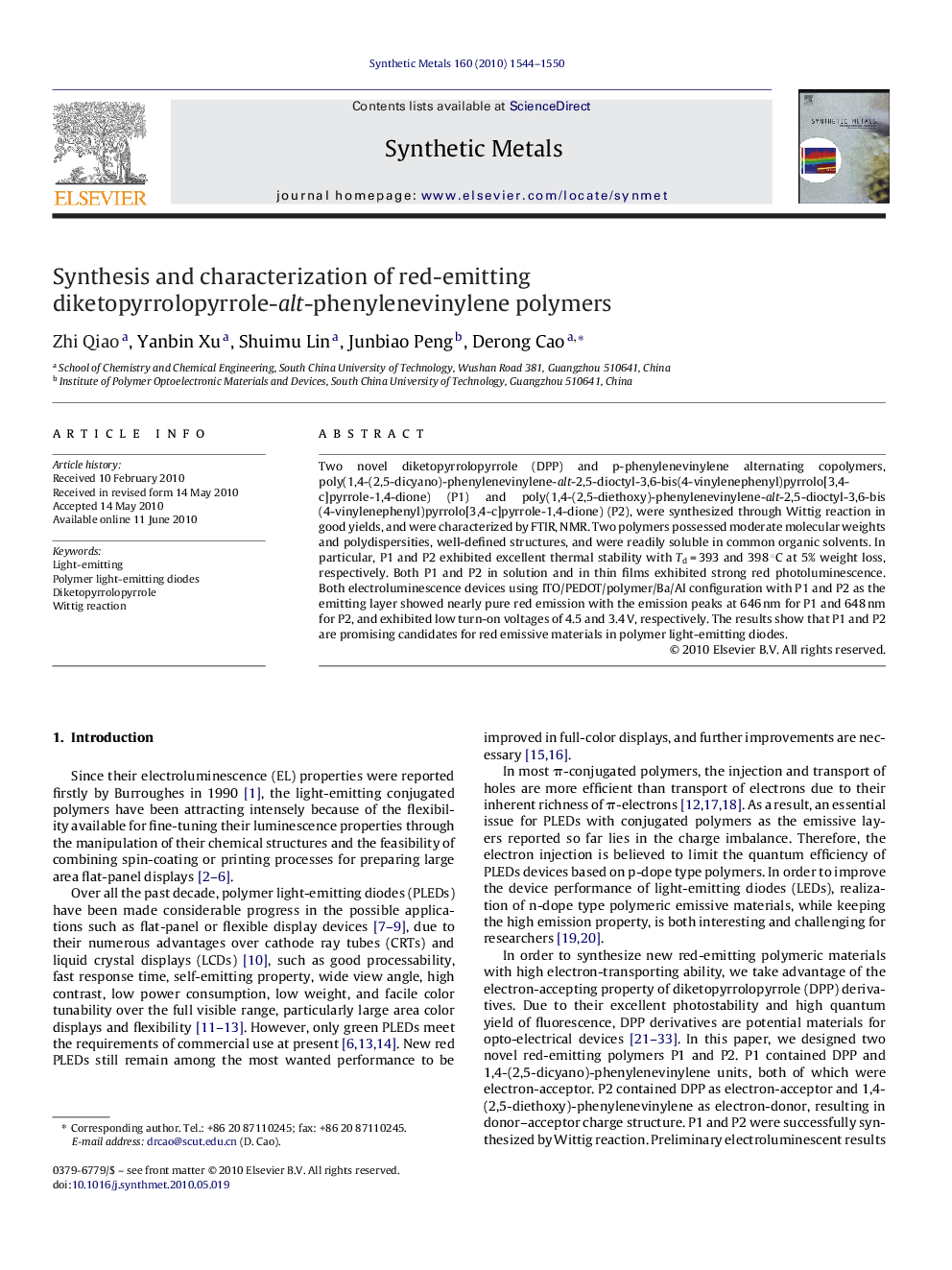| Article ID | Journal | Published Year | Pages | File Type |
|---|---|---|---|---|
| 1442647 | Synthetic Metals | 2010 | 7 Pages |
Two novel diketopyrrolopyrrole (DPP) and p-phenylenevinylene alternating copolymers, poly(1,4-(2,5-dicyano)-phenylenevinylene-alt-2,5-dioctyl-3,6-bis(4-vinylenephenyl)pyrrolo[3,4-c]pyrrole-1,4-dione) (P1) and poly(1,4-(2,5-diethoxy)-phenylenevinylene-alt-2,5-dioctyl-3,6-bis(4-vinylenephenyl)pyrrolo[3,4-c]pyrrole-1,4-dione) (P2), were synthesized through Wittig reaction in good yields, and were characterized by FTIR, NMR. Two polymers possessed moderate molecular weights and polydispersities, well-defined structures, and were readily soluble in common organic solvents. In particular, P1 and P2 exhibited excellent thermal stability with Td = 393 and 398 °C at 5% weight loss, respectively. Both P1 and P2 in solution and in thin films exhibited strong red photoluminescence. Both electroluminescence devices using ITO/PEDOT/polymer/Ba/Al configuration with P1 and P2 as the emitting layer showed nearly pure red emission with the emission peaks at 646 nm for P1 and 648 nm for P2, and exhibited low turn-on voltages of 4.5 and 3.4 V, respectively. The results show that P1 and P2 are promising candidates for red emissive materials in polymer light-emitting diodes.
